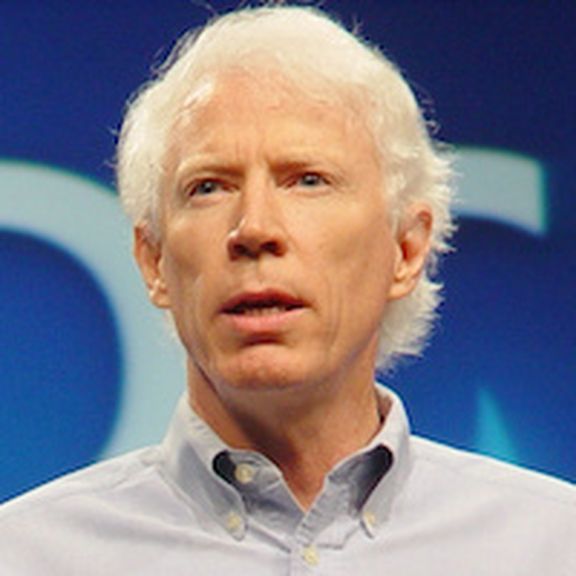
ConnectWise is a software company, a services company and an IT community builder. All three of those legs are critically important to the business. But frankly, ConnectWise's best option for business success -- past, present and future -- involves engaging the IT Nation community.
I believe CEO Jason Magee has always known and embraced that truth -- even before he succeeded Arnie Bellini in February 2019. That CEO succession plan sprung into motion when private equity firm Thoma Bravo acquired the business.
Fast forward to January 2020, and Magee expressed his partner-centric view of the world to me during dinner in Tampa, Florida. The conversation mostly involved Magee's desire to take ConnectWise "back to basics." Translation: He wanted to more deeply engage the IT Nation, and drive innovation based on those partner conversations. But that simplified path forward hasn't been easy.
The IT Nation Partner Blue Print: Inspired By Novell

Before you analyze ConnectWise's overall business strategy, it's important to understand IT Nation. For those who are new to the discussion, ConnectWise's roots stretch back to Novell NetWare Users International groups and the associated BrainShare conference -- which gained momentum in the early 1990s.
Novell, focused on partners, pioneered the Local Area Network (LAN) software market. Sure, NetWare was the software. But a channel focus was the secret to Novell's success.
ConnectWise ultimately emulated Novell's partner-led strategy starting around 2005 or so. More than helping MSPs consume and sell software, ConnectWise built IT Nation to help MSPs understand and maximize monthly recurring revenue (MRR) strategies. Drive MRR and EBITDA profit margins, and you'll maximize your MSP business valuation, ConnectWise accurately told partners.
Not by coincidence, that MSP success would drive more consumption of ConnectWise's software and services.
Novell's Fall From Grace: Lessons for All MSP Software Companies
Clearly, Novell's partner-led rise taught ConnectWise key lessons. But Novell's stunning fall from grace may teach ConnectWise and its rivals an even more important lesson.

The history lesson reads like this:
- By the mid-1990s, Novell spent too much time chasing acquisitions (WordPerfect, Unix Systems Labs, DR-DOS and others) amid a competitive obsession vs. Microsoft. Instead of focusing on partners and customers, Novell worried about Microsoft at every turn.
- Meanwhile, Microsoft hired some of the best software development minds (i.e., Dave Cutler and Jim Allchin, etc.) and innovated with Windows NT Server. A general purpose operating system, NT countered NetWare's file-and-print capabilities; NT supported TCP/IP natively; and NT offered application services to run a new wave of client-server applications. The NT architecture set the stage for Exchange Server. Moreover, Microsoft built a partner-led channel for NT.
NT had a humble start around 1994, then rose rapidly by around 1996. Meanwhile, Novell fell amid failed attempts to integrate and cross-sell NetWare with a lengthy list of acquired products -- including DR-DOS, AppWare, UnixWare, PerfectOffice, GroupWise... and the list goes on.
The simple but painful lesson: Never let M&A distract your business from a partner-led obsession.
ConnectWise's Four Business Challenges
I believe Magee is aware of the Novell history lesson. During our dinner in January 2020, he emphasized partner relationships far more than he spoke about software. Fast forward to a mid-2021 conversation with ChannelE2E, and Magee once again was focused on partner support.
Still, at least four major challenges were lurking for ConnectWise amid Magee's shift to the CEO role. They included:
- Client-Server Architectures: Some of the ConnectWise products were built on pre-cloud code bases. Most notably, ConnectWise Automate (formerly LabTech) was designed during the tail end of the client-server era -- just as Microsoft was racing to shift from Small Business Server, Exchange Server and Business Productivity Online Services (BPOS) toward Microsoft Office 365. Even for a software giant like Microsoft, that shift from client-server to Office 365 was a painful one.
- Overlapping Products & People: ConnectWise had acquired Continuum in November 2019. The upside included proven NOC (network operations center) and help desk services for MSPs. The challenge involved overlapping RMM (remote monitoring and management) products, and the need to digest/integrate a substantial workforce.
- MSP Software Under Attack: Cyberattacks against MSP software were on the rise. Instead of innovating with new product features, ConnectWise and some of its rivals were busy hardening their existing code bases from attacks.
- COVID-19 Cripples Communities: The pandemic began to derail various economies worldwide in early 2020. Sure, all software and technology companies had to shift to remote work and online learning. But ConnectWise -- perhaps more than any other SMB technology company -- depended on in-person interaction with the IT Nation conferences, peer groups and quarterly user groups to drive success.
Amid all that, competition from entrenched rivals (Datto, Kaseya, N-able), emerging players (NinjaOne), and disruptive upstarts (Atera, SuperOps.ai, and SyncroMSP, among others) remained fierce... and remains fierce to this day.
ConnectWise's Financial Performance: Still, ConnectWise's business metrics have remained healthy. Exact profit and revenue figures are unknown. But a September 2021 report from Fitch Ratings revealed these key performance indicators for ConnectWise:
- Recurring revenue represents over 95 percent of total ConnectWise revenue.
- The company’s net revenue retention rate has been sustained at over 100 percent.
- Pro forma quarterly software annual recurring revenue (ARR) growth has remained above 10 percent since Thoma Bravo acquired ConnectWise in 2019.
- ConnectWise serves over 35,000 customers — MSPs and TSPs (technology solutions providers) — globally.
- During 2020, no single customer represented over 1 percent of ARR.
ConnectWise: Right Leaders at the Right Times?
Meanwhile, the CEO shift from Arnie Bellini to Jason Magee represented a shift from evangelist to operationalist. And at this stage of the MSP market, that remains the right move.
During the early days of the MSP market, Bellini evangelized monthly recurring revenues (MRR); remote management to eliminate truck rolls; and other steps to help MSPs build predictable, profitable revenue streams. Bellini convinced VARs that they could succeed as MSPs long before the managed services model was widely proven.
Fast forward to present day. Instead of evangelizing the MSP business model, ConnectWise now needs a leader who is a realist and operationalist.
- A realist is someone who sizes up business challenges and key opportunities, and then develops a realistic plan to address the challenges and capitalize on the opportunities.
- An operationalist takes the game plan and makes sure it is implemented effectively.
When it comes to executive leadership, the shift from evangelist to realist/operationalist isn't easy. But we've all seen it work before. The prime example involves Apple's shift from Steve Jobs to Tim Cook.
Still, the Apple comparison doesn't quite work here. Cook inherited the widely successful iPhone and app store, and then built out services around those platforms. Magee, in contrast has had to manage M&A, some overlapping code bases, and some aging code bases that require cloud-scale modernization. Amid all that, some recent media speculation questioned Magee's job security at ConnectWise.
What do I think?
- I've heard rumors and speculation, but I kept my mouth shut and keyboard closed because none of the chatter came directly from credible sources who would be "in the know" about ConnectWise's C-suite plans.
- I continue to believe that Magee is the right CEO at the right time at ConnectWise. The company requires a realist and an operationalist to size up and address the current challenges, while capitalizing on opportunities.
So, Where Does ConnectWise Go From Here?
Fast forward to November 2021. The pandemic has eased quite a bit in many regions as vaccinations take hold. Amid that backdrop, ConnectWise reconvened the IT Nation Connect 2021 conference last week in Orlando, Florida.
A perfect event? Nope. A strong event that showed the MSP market remains healthy, and proved that ConnectWise still has the ability to attract the right crowd to the right conversations? Absolutely.
And yes, Magee is listening to the IT Nation crowd -- at big gatherings in Orlando, and at smaller impromptu discussions, such as one that occurred in Denver. His biggest priority? Continuing to improve and harden ConnectWise's own security. Next up, continuing to improve ConnectWise's support.
The evidence? ConnectWise, since acquiring Continuum, has hired more than 300 staff in post-sales roles to address SOC, Partner Success and Product Support needs, Magee told ChannelE2E.

Additional ConnectWise leaders are in listen and learn mode. Several weeks before IT Nation, ChannelE2E grabbed some time with new ConnectWise Chief Marketing Officer Amy Lucia, a channel veteran with Microsoft DNA in her blood. Much of the conversation was on background at the time. The key takeaways? She asked as many questions as she answered. And Lucia had sized up ConnectWise's challenges and opportunities long before IT Nation Connect 2021 arrived, and long before we connected online.
Fast forward to present day, and ConnectWise has a simplified vision and mission:
- The Vision: To power a thriving IT ecosystem that transforms what's possible for SMBs.
- The Mission: We empower IT solutions providers with unmatched software, services and community to achieve their most ambitious vision of success.
The vision certainly reflects a focus on IT Nation. But can ConnectWise live up to that mission -- right now?
What Are ConnectWise Asio and ConnectWise RMM?
I concede: I believe the mission statement is aspirational in some areas. To deliver "unmatched software" ConnectWise has to deliver in some key areas -- including its recent Asio and ConnectWise RMM promises.

Asio is an underlying software platform that will ultimately unify the ConnectWise platform experience for IT solutions providers. ConnectWise won't sell Asio. Instead, the company will build and sell various applications that run atop of Asio. That's where ConnectWise RMM enters the picture -- a “new solution” that’s positioned as the next generation of ConnectWise Automate.
Some of Asio is based on the Continuum's foundational code, which was modernized ahead of the company sale to ConnectWise, Chief Product Officer Jeff Bishop confirmed to ChannelE2E. Similarly, some of ConnectWise RMM leverages Continuum's earlier work. But watch for more and more ConnectWise Automate services to surface in ConnectWise RMM, Bishop added. A few dozen ConnectWise partners are already testing the new RMM code, Magee noted during our IT Nation conversation.
Still, the move to a unified code base -- namely, Asio -- won't happen overnight. ConnectWise will incrementally move additional applications to Asio starting in 2022, Bishop noted.
We've all seen software transitions like this before. I mentioned a few of them further above in this article (namely, Microsoft Exchange Server on-premises to BPOS to Office 365). The journey to a new code base is never easy. At the same time, ConnectWise must continue to improve its overall support experience, some MSPs tell ChannelE2E.
Still, Magee is in listen mode. And at long last, listen mode involves a return to larger IT Nation events -- where face-to-face partner feedback reaches Magee and the ConnectWise team without any social media free-for-alls or video conferencing filters. In ChannelE2E's opinion, the realist in Magee knows ConnectWise has to improve its software. And the operationalist in Magee is taking steps to ensure each of ConnectWise's products surface on the Asio platform.
But ultimately, ConnectWise's future depends on its ability to engage, support, empower and respond to IT Nation. Last week's IT Nation Connect 2021 conference offered a promising start in that journey.




